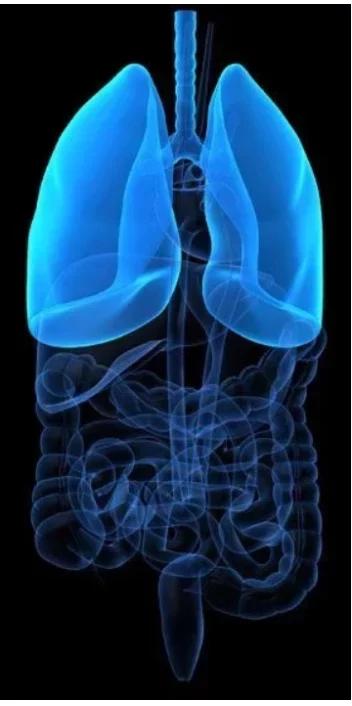Article
PLCOm2012 Risk Prediction Model Is Highly Sensitive in Identifying African American Ever-Smokers With Lung Cancer
Author(s):
The PLCOm2012 risk prediction model is a preferable lung cancer screening method for identifying African American ever-smokers over the current United States Preventive Services Task Force lung cancer screening eligibility criteria, which may help to overcome racial disparities.

The PLCOm2012 risk prediction model is a preferable lung cancer screening method for identifying African American ever-smokers over the current United States Preventive Services Task Force (USPSTF) lung cancer screening eligibility criteria, which may help to overcome racial disparities, according to retrospective findings published in the Journal of Thoracic Oncology.1
Results showed that the PLCOm2012 risk prediction model, compared with the current USPTF criteria, increased sensitivity for African Americans at risk for lung cancer by 1.51%, 1.7%, and 2% per 6 years (P <.0001).
Both the PLCOm2012 and PLCOm2012noRace risk prediction model models were additionally found to be more sensitive in White patients at the 1.51% threshold, though there were no notable differences at the 1.7% and 2% thresholds.
While the USPSTF criteria and the PLCOm2012 model demonstrated low sensitivity in the Hispanic patient population, at the 3 thresholds; however, the PLCOm2012noRace model showed statistically significant sensitivity across all 3 thresholds.
In a cohort of Asian patients (n = 24), the sensitivity rate was 51.9% with the USPSTF model, while the sensitivity rates were 49.8% and 57.7% for the PLCOm2012 and PLCOm2012noRace models, respectively, at the ≥1.7% threshold. There were also sensitivities of 51.5% and 61.0% at the ≥1.5% threshold. However, investigators cautioned that both the Hispanic and Asian cohorts had smaller numbers of patients.
“We found that the PLCOm2012 model was significantly more sensitive in selecting lung cancer patients as being eligible for screening for the entire cohort,” said lead study author Mary M. Pasquinelli, APRN, FNP-BC, nurse practitioner in the Division of Pulmonary, Critical Care, Sleep, and Allergy at The University of Illinois Hospital & Clinics.2 “Broader use of this model in racially diverse populations may help overcome disparities in lung cancer screening and outcomes.”
Data suggest that African American ever-smokers at high risk of lung cancer may significantly benefit from lung cancer screening. Despite studies indicating that high-risk African American ever-smokers would benefit from screenings compared with other racial or ethnic groups, a recent study with 48,364 ever-smokers indicating that only a small number of African American patients met USPSTF criteria compared with White patients (17% vs 31%, respectively; P < .001).3
In the retrospective analysis, investigators evaluated patients with lung cancer who were diagnosed at the University of Illinois Hospital and Health Sciences System from 2010 to 2019. The initial study population consisted of 1050 cases of thoracic cancer, though 72 cases were excluded wherein patients were diagnosed with pulmonary low-grade neuroendocrine carcinoma, sarcoma, adenoid cystic carcinoma, mesothelioma, thymoma, thymic carcinoma, and metastatic cancer from other disease sites. An additional 84 cases of never-smokers (<100 cigarettes in their lifetime), 4 cigar smokers only, and 7 of unknown smoking status were additionally excluded from the study, leaving 883 cases for the analysis.
The median age was 64.8 years old. The majority of patients were African American (56.3%; n = 497) with the rest being White (29.2%; n = 258), Hispanic (7.8%; n = 69), Asian (2.7%; n = 24), and the remainder were either another race or unaccounted for (4.0%; n = 35).
African American ever-smokers had fewer packs per year than White ever-smokers (37.3 vs. 48.2; P < .001), had a higher chance of being a current smoker (65.6% vs. 57.0%; P < .001), and had a lower body mass index (BMI) than average (25.8% vs. 27.1%; P = .004). Among the total number of patients, 16.6% had stage I disease, 6.6% had stage II disease, 21.8% had stage III disease, and 55% had stage IV disease.
Overall, the PLCOm2012 model was more sensitive at the 1.7% threshold than the USPSTF screening criteria. Only 5% of cases (n = 44) were USPSTF criteria positive and PLCOm2012 ≥1.7% risk threshold negative. However, 18.8% of patients (n = 166) were PLCOm2012-positive and USPSTF-negative at the same threshold. In total, 45.3% of cases (n = 400) were ineligible by USPSTF criteria. However, among these ineligible patients, 36.2% (n = 145) would be eligible by PLCOm2012 ≥1.7% criteria; among those who would be included by these standards, 26.4% (n = 24) were White and 45.4% (n = 109) were black.
Investigators concluded that USPSTF criteria significantly under-selected African American ever-smokers compared to white ever-smokes in addition to displaying a lower sensitivity to detecting lung cancer than the PLCOm2012 model across all 3 thresholds. It is believed that the use of an accurate lung cancer risk prediction model along with modified eligibility criteria for lung cancer screening guidelines could help overcome racial disparities in lung cancer screenings.
References
- Pasquinelli M, Tammemagi M, Kovitz K, et al. Risk prediction model versus united states preventive services task force lung cancer screening eligibility criteria – reducing race disparities [published online ahead of print August 18, 2020]. J Thorac Oncol. doi:10.1016/j.jtho.2020.08.006
- Current Lung Cancer Public Health Screening Guidelines Undercount African Americans. News release. Journal of Thoracic Oncology. August 18, 2020. Accessed August 18, 2020.
- Aldrich MC, Mercaldo SF, Sandler KL, Blot WJ, Grogan EL, Blume JD. Evaluation of USPSTF lung cancer screening guidelines among African American adult smokers. JAMA Oncol. 2019;5(9):1318-1324. doi:10.1001/jamaoncol.2019.1402








